
Our food forest is starting to grow with the warmer weather. Here are some pictures
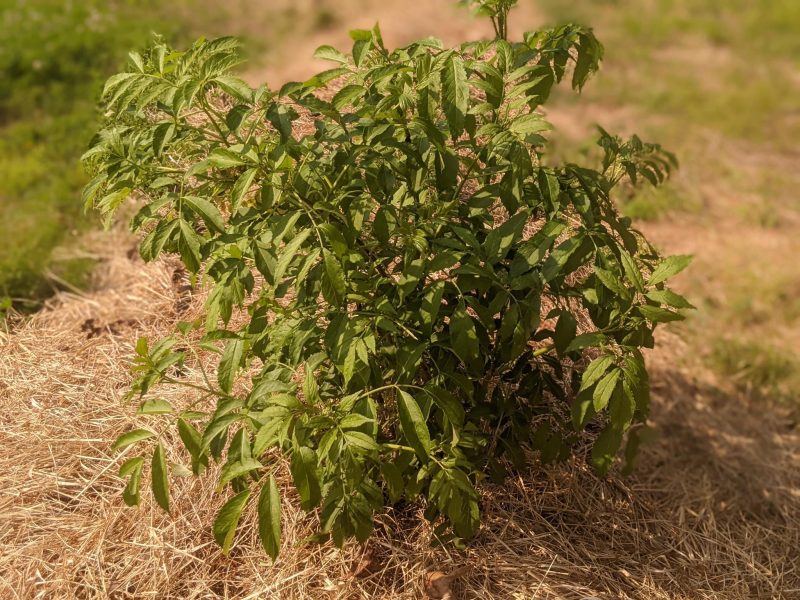
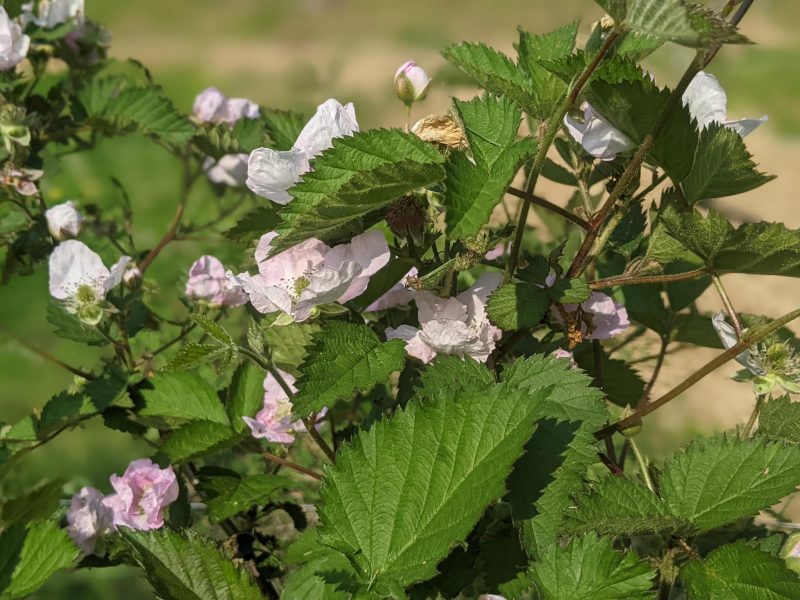


Our food forest is starting to grow with the warmer weather. Here are some pictures



What Can You Do
This year has been a challenging year when it comes to supply chain issues and inflation. The rising price of gas and food has impacted all of us at some level. People with the least disposable income getting hurt the worst. At some point, rising food prices will lead to political instability and riots. Rising food prices were what caused the Arab Spring riots. Americans are no less susceptible to the effects of rising food and fuel costs.
Here are some ways to fight back against the rising cost of food
These are doable action items. Don’t let excuses hold you back!
audentes Fortuna iuvat – Fortune favors the Bold

The last two days have been a blur. We have been busy. Even with 4 people on the farm working hard, we still have more stuff to do before everything is been planted.
We are on still on a rapid learning curve as we work hard. The garden area in the pictures below was pasture for decades so we had to work to plow up the grassy area and then build new beds.
The BCS tiller was also a new piece of equipment for us. The biggest challenge we’ve had with the BCS is laying out beds so that the rows come out the width that we want. Our BCS tractor has the 5.5 inch extensions added to the the 749 tractor. This makes the tractor wider by 11 inches.
The vegetable garden beds are on a sloped face. To help minimize any erosion issues during rain events, we kept a 10 foot ribbon of grass between each plot. Each plot was laid out to have 2 rows per plot (30″ wide rows) with an 18″ wide walkway between each row. When I added up 3 walkways plus a quantity of 2 of the 30″ wide rows, then we should need a plot that is 9.5 feet wide. In practice, it just isn’t working out that way. I suspect we’ll have to till and hill a plot and measure to see where I’m off in my estimation of the total width of each 2 row plot. There is definitely a learning curve to becoming a better farmer.
We just installed rows of trellis for pole beans and tromboncino squash. We are using a curved trellis for the tromboncino squash and pole beans. I keep seeing videos and picture of the curved and over trellis configuration, so we wanted to see at try and find out if it works as well as we keep hearing. The curved trellis (when covered with tromboncino squash) should provide provide shade for the young rhubarb.
One of my projects for this summer is to install posts in the field, near the rows, where we can hang the cattle panels (used in the trellis) this fall after we take the trellis down and store it for the winter.


One of the projects this month was to map and tag each fruit bearing tree and bush. My wife took this project and ran with it. We now have a map that shows the location of each fruit bearing tree and bush, indicated by a unique tag number. The unique tags number are recorded in a spreadsheet. Information about each plant is recoded with the tag number, such as variety and date planted. This will also us to track historical data about each plant. This data is also useful when we propagate cuttings, allowing us to properly identify plants for sale.


It is the time of year where you never know if it is going to be an 80 degree day or a 40 degree day. We are still getting ready to start planting our summer garden. This was also the first time I mowed the grass for the season. More and more plants are starting to grow. The drip irrigation system is still a work in progress. Once we have the planting beds made then we can put down the drip tape and test the system.
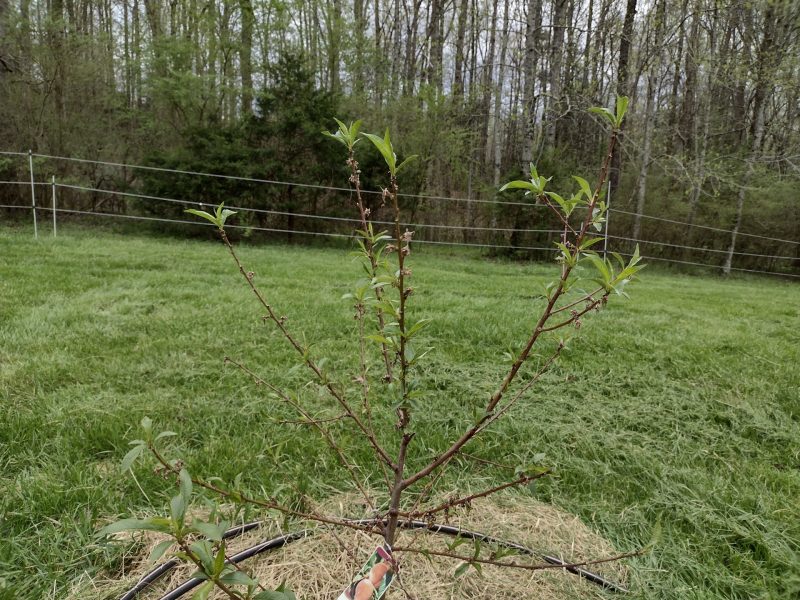



We had a fairly mild winter so the weeds started growing early in the garlic beds. This year we put down hay twice to try and suppress weed growth. Hopefully we can avoid a lot of weeding this way. I was pleasantly surprised that our garlic beds survived our neighbors cows getting loose and trampling the plants earlier in the winter.
We have several patches of wild American Mandrake. It grows in the shady areas. I’m hoping that we can actually try some of the fruit this year. That would mean that we would have to time picking it just right. If we wait too long the squirrels and deer will beat us to the ripe fruit.


The Mayapples are up and thriving. We noticed the fruit starting to form. We are hoping to try the fruit this year, assuming we can beat the deer and raccoons from eating it first.


We put down silage tarps earlier in the winter. The goal is to help with weed control and terminate the fescue grass under the tarp. This weekend we moved the silage tarp from the vegetable rows (picture below – 6 bed with 2 rows per bed that are 30 inches wide by 35 feet long) to what will become a cover crop area adjacent to the first row of fig trees in field #2.
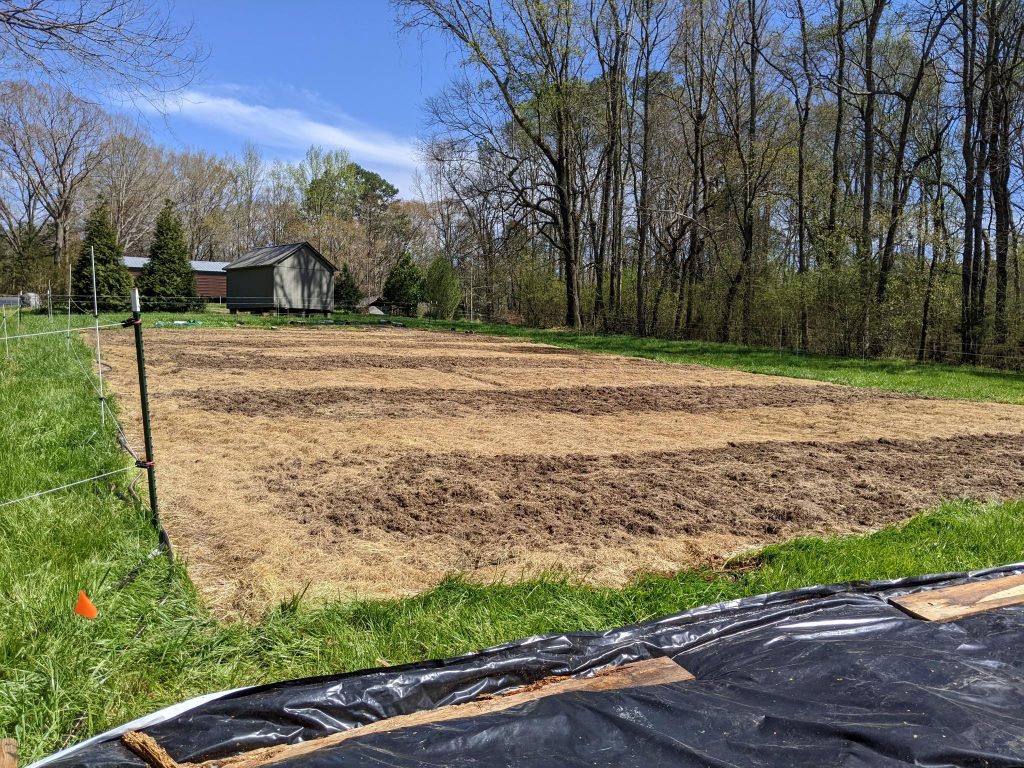
The garlic should be ready sometime in early July. This year we’ve used hay to help and control the weeds in the garlic bed. This is the second application of hay to these rows. The hay adds organic matter to the soil as it composts.

The Iris are coming up. We planted them in the fall. We just added partially composted wood chip mulch around them to help protect them from the summer heat and control weeds. The chips came from a local tree service company.

The weather on Saturday was kinda crazy. It started out fairly warm and then just kept getting colder.
We had planned to plant beets, peas and radish. The plan was to pull back the tarps and build beds to plant in. The silage tarp has been down for several weeks. Last weekend we added more tarps before the rain started. The plan was to roll back the tarps and build beds for the beets, peas and radish. Then we could plant in dry ground. Sounds like a good plan.
However, it was not a good plan. When we pulled back the silage tarp and the other tarps, what we found was some very wet ground. Once again I was unable to impose my timeline on the farm. I say that as a joke. Our transition from backyard gardening to a small scale farm has been quite a learning experience. I’ve found time and time again, that we can’t impose our timeline and our will on the farm. Instead we have to be flexible and understand that everything happens in due time.
Our food forest area consists of a mulberry trees, elderberries, blackberries, raspberries and figs. There is also a hugelkultur mound at the edge. We started our food forest last year in a field with very established grass. The grass is good because it holds the soil in place but creates a few issues. The grass competes with the bushes and trees for resources. The grass also hides the drip irrigation lines and emitters, making it easy to hit with the lawnmower or weed eater. Keeping the grass cut in the immediate are around plants makes it easy to damage the plants if you get too close with the lawnmower or weed eater.
We spent the day putting down a biodegradable weed blocker. The weed blocker we use is a paper mulch from Chatham Farm Supply in Pittsboro, NC The weed blocker is manufactured by www.7springsfarm.com .
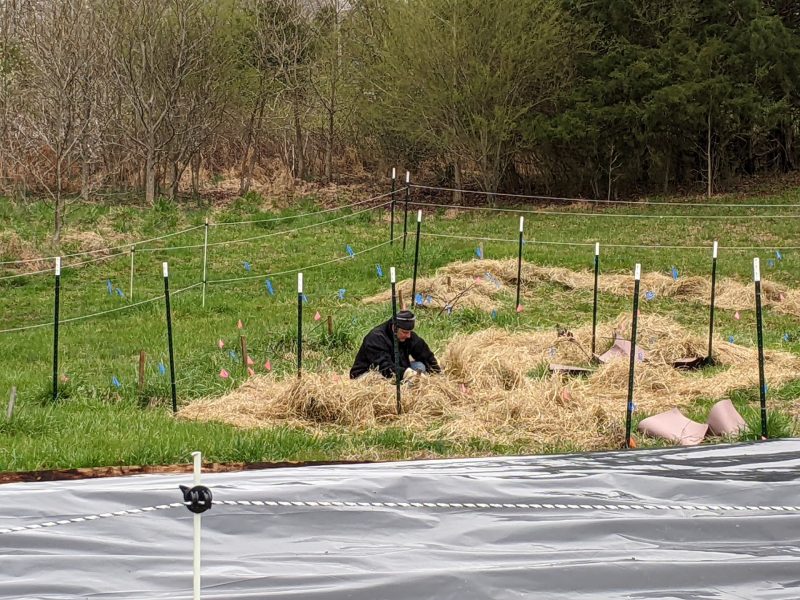
We originally tried doing a long length of paper, but the wind kept that from working. Doing small pieces worked much better and were easier to manage on a windy day.



It is really important to make sure that before using hay or stray in your garden, you find out what chemicals were sprayed on the hay as it was growing. Some of the chemicals used in the production of hay (which is typically used for livestock food) are safe for live stock but may kill the plants in your garden. Some farmers assume that safe for livestock means safe for the garden, but often that isn’t the case.
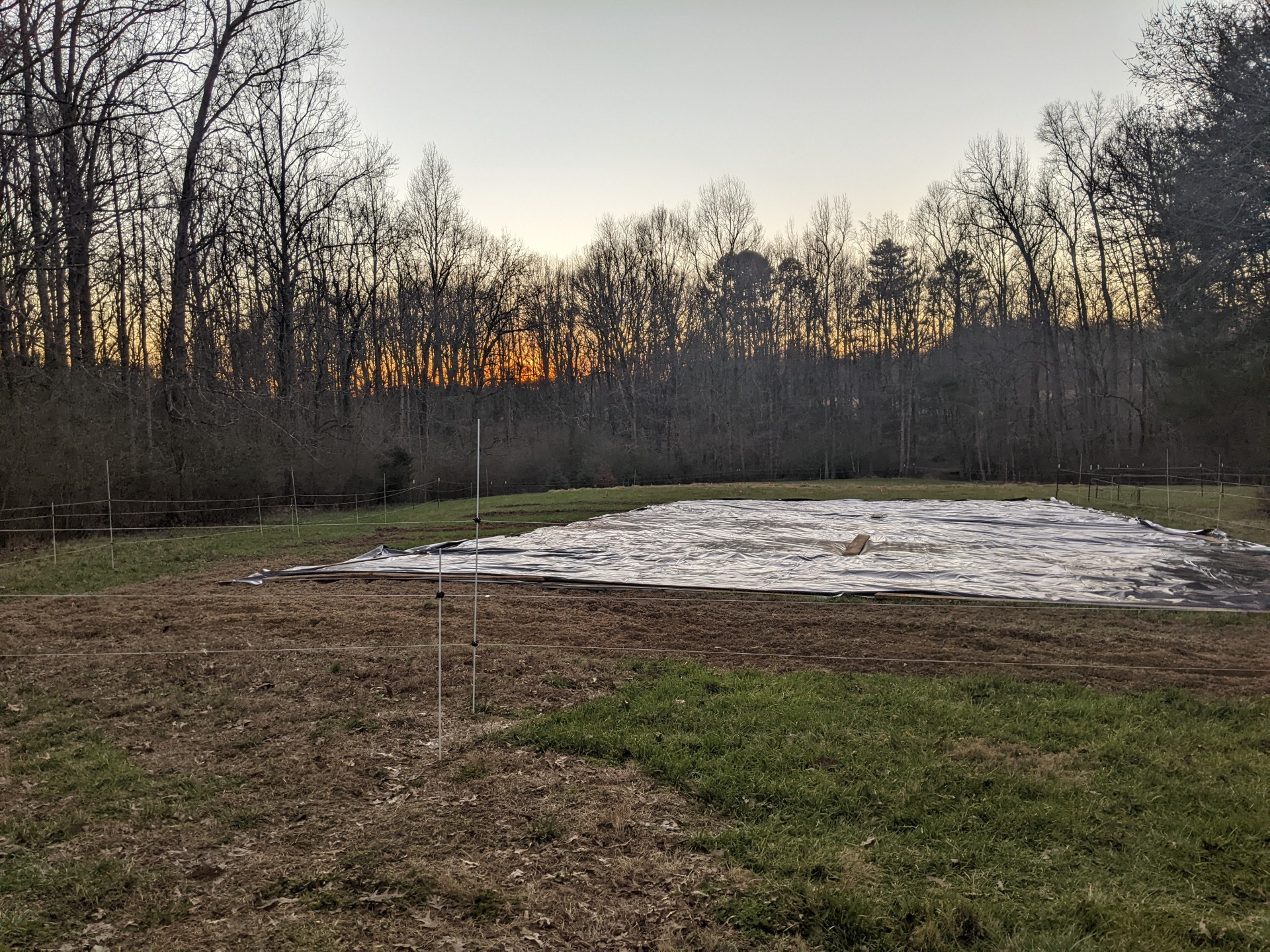
What a busy few days. When it comes to homesteading there is always a lot to learn and share. We worked on the following:
Thanks again to everyone who helped!
If you missed out on this one, join us this fall. Info soon at www.nchomestead experience



Getting a farm up and going has been a big project. Sometimes it seems like the world has gone crazy, but on the farm there is a peace and serenity. We’re getting ready for growing season and the plants don’t care about politics or ideology, they just want great soil, rain and sunshine. So after a day or working on the farm we get a break from all the covid and politics and it is wonderful.

This was a busy week. We used our new BCS tractor for the first time. That went well. It should be a great tool for use in the garden.
Having another set of hands made things so much easier. I drove the t-posts in the ground while Connie and her sister put the wire up.


We are getting ready for our 2022 NC Homestead Experience. One of the tasks is to locate where the fig trees and elderberry plants go. I wanted to plan ahead with the locations so I can add swales. So I used an A frame level. It only took a few minutes to build it. This allowed me to place the trees at the same elevation line on the hill. Here is a great primer on a frames in permaculture





Parting thought – plant a garden!

Let’s start off with what is a Hugelkultur mound. Here is a great video that explains Hugelkultur

We built our first hugelkultur mound in our garden at home. The mound is about 35 feet long and used trees that we had cleared on the back of the property. It has worked great for growing squash. We use drip watering to keep the plants watered. We have noticed that the hugel mound requires more water than the conventional garden areas. I expect that to reverse as the logs in the hugelkultur mound (about 1-2 years since the trees were cut) decompose.
My original goal with to build at least 2 large hugelkultur mounds on our hobby farm property. We had a great growing experience with the hugelkultur mound at our house, so why not try it on a larger scale.
When we put in the driveway, there were two problems what we were able to turn into opportunities. The first is what to do with the top soil that was removed before the membrane and gravel can go down. We also had to decide out what to do with the tree trunks and limbs from the trees that were cut down to build the driveway.
There was never going to be a better time to build the first hugelkultur mound on the new property. So we used the logs, limbs and top soil to build the first one. The mound ended up being 85 feet long, 30 feet wide and about 8 feet tall.

We installed drip irrigation and planted winter squash, watermelons, pumpkins and cantelopes. I was pleasantly surprised by the number of winter squash and pumpkins.
One of the tasks for Saturday was to cover the entire mound with a 35 x 100 foot silage cover. Of course it wasn’t windy until after we started spreading the silage cover. Do you remember going out into the parking lot in elementary school where your class surrounded a parachute? This felt pretty similar with the wind getting under the tarp.


You can see the bumps where the wind kept getting under the tarp as we were getting it in place and held down.

Once the tarp was in place, we’ll leave it there until just before we plant at the end of April as way to suppress any weeds.

Why – Cost of Food is Increasing, Availability is Decreasing
https://www.bloomberg.com/news/articles/2021-12-10/price-shock-at-the-meat-counter-worsens-u-s-inflation-jitters – as an example beef is up 20% this year
I’ve seen numbers from 6 to 20% for other sectors of the food supply.
Lets do the math. Here is one analysis:
Maybe groceries prices will stabilize and maybe the supply chain issues will resolve themselves. I doubt it, but I obviously can’t predict the future. I can learn from history. The American empire is in decline and we have a few long decades ahead.

Thinking About The 2022 Growing Season
Looking forward to growing season, you can break the challenges down into 2 broad areas:
1) raising a surplus of food (planting, maintaining, harvesting)
2) preserving the food
One of the challenges in dealing with fresh food is preserving it in a timely basis. When veggies are ripe they have to be picked, maintained in a cool environment and then preserved within a few days. This is common knowledge, but as we’ve gotten better at gardening and preserved food, it becomes clearer how difficult and how much work it is to make that work within the time constraints.

Lets take a look at the steps to preserve food:
1) prep the food – wash, clean and cut it up into what ever sizes are needed, blanche or cook (if needed). This part of the process is the most labor intensive and has to be done soon after the items are picked (time sensitive). After this is done, many items can be frozen until it is time to can or preserve them. This is also the step the requires the least amount of equipment (at least until we run out of freezer space).
2) preserve the food – water bath can, pressure can, dehydrate, freeze dry, freeze, etc.
3) post process – for dehydrating this would mean putting it in jars with oxygen absorbers and evacuating the jar, for canning you let the jars sit and cool before putting them up for storage (the easy part)
Items to Consider Buying for Preserving Food this Year
I realize each one of you has different space limitations and budgets, but here is a list of items that you will keep and use for decades, some for the rest of your life. I’m not trying to push you into doing anything, just giving you information and encouraging you to use your own judgement to do what ever it is that you need to do.
If grocery prices continue to rise, then there will be a rapid increase in people gardening (or trying to garden) and a subsequent rise in people trying to purchase these items below. There was a period last year were you just couldn’t get jars, and if you could find them online then the prices were really high, even for off brand jars.
Also look at being able to preserve your food as a way to save money, especially as food prices go up. If you have trouble paying the bills now, could you live with your food prices doubling? Now is your chance to do something about it. Buy food when it is less expensive and plentiful (i.e. during the harvest) and save it for later.
General Things Needed
Freezer – no matter how you preserve your food, a freezer is important. It allows you to prep food and freeze it until you can get it preserved. Freezing is also a great way to store food.
I’ll break down the overall things you’ll need for each method of food preservation.

Canning
https://www.lehmans.com/product/41-12-qt-high-quality-pressure-canner/
https://www.lehmans.com/product/black-enamelware-canner-215-qt/ – bigger is better, just measure your stove to make sure it fits
https://www.lehmans.com/product/enamelware-21-12-qt-canner-with-5-piece-tool-set/ – this one comes with jar grippers and funnels

Dehydrating
https://excaliburdehydrator.com/ – gets good reviews
https://www.nesco.com/product/fd-80-snackmaster-square-food-dehydrator/ – we have this one with 9 trays
Freeze Drying
NOTE: You maybe be able to find many of these things used, canners and jars. As long as jars aren’t chipped or broken they last forever. Often when someone stops canning they will give away their jars and pressure canners. If the pressure canner uses a gasket, you may be able to purchase a new one if the old one is unavailable or damaged.
Most grocery stores will have a limited supply of canning jars, just pick them up as they are available.
Use Your Judgment
Use your judgement and do what you can afford. I’m not suggesting in any way that you go in debt for these things. I am strongly suggesting that you buy jars / lids / rings and a dehydrator at a minimum. If you have the budget, then a freeze dryer would be an great investment. Freeze drying is the easiest process to do. Use your judgement. Hopefully that example inspires you to prosper in what could be a difficult few years.
audaces fortuna iuvat – fortune favors the bold
Parting thought – These links just products that I feel strongly enough to recommend. I have no relationship with any of these companies, other than being a customer.